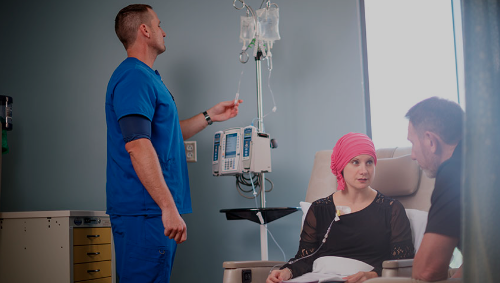
Chemotherapy stands as a cornerstone in the field of oncology, representing a formidable weapon against various types of cancer. This comprehensive exploration, spanning 6000 words, delves into the multifaceted realm of chemotherapy, encompassing its origins, mechanisms, types, side effects, advancements, and future prospects. Let’s embark on a journey to unravel the intricacies of chemotherapy and its pivotal role in the fight against cancer.
Historical Context and Evolution of Chemotherapy
Early Beginnings: The Discovery of Chemotherapeutic Agents
The roots of chemotherapy can be traced back to the early 20th century with the serendipitous discovery of the first chemotherapeutic agent, arsenic-based compound Salvarsan, by Paul Ehrlich in 1909. This marked the initial foray into the realm of targeted chemical compounds for treating diseases.
World War II and Antimetabolites
The devastating impact of World War II accelerated research in chemotherapy. Antimetabolites, such as methotrexate, emerged during this era, laying the foundation for drugs that interfere with the metabolic processes of cancer cells.
Post-War Era: The Advent of Combination Chemotherapy
The post-war period witnessed a shift towards combination chemotherapy, where a cocktail of drugs was employed to target cancer cells through different mechanisms. This approach aimed to enhance efficacy and minimize the development of drug resistance.
Mechanisms of Action
1 Cell Cycle Interference
Chemotherapeutic agents disrupt the cell cycle, impeding the ability of cancer cells to divide and proliferate. This often involves targeting specific phases of the cell cycle, such as DNA synthesis or mitosis.
2 DNA Damage and Repair Inhibition
Many chemotherapy drugs induce DNA damage within cancer cells, preventing them from replicating properly. Inhibition of DNA repair mechanisms amplifies the effectiveness of these drugs.
3 Apoptosis Induction
Apoptosis, or programmed cell death, is a crucial process in maintaining cellular homeostasis. Chemotherapy triggers apoptosis in cancer cells, eliminating them from the body.
Types of Chemotherapy
1 Alkylating Agents
Alkylating agents, including cyclophosphamide and cisplatin, form covalent bonds with DNA, disrupting its structure and preventing cancer cell division.
2 Antimetabolites
Antimetabolites mimic essential cellular components, interfering with DNA and RNA synthesis. Methotrexate and 5-fluorouracil are prominent examples.
3 Anthracyclines
Anthracyclines, such as doxorubicin, exert their effects by intercalating into DNA, inhibiting topoisomerase enzymes, and generating free radicals that damage cellular structures.
4 Taxanes and Vinca Alkaloids
Taxanes (e.g., paclitaxel) and vinca alkaloids (e.g., vincristine) disrupt microtubule function during cell division, preventing the separation of chromosomes.
5 Targeted Therapies
The advent of targeted therapies, like tyrosine kinase inhibitors and monoclonal antibodies, allows for precision in attacking specific molecules involved in cancer growth and progression.
6 Hormone Therapy
Hormone therapy interferes with the hormone signaling that fuels certain types of cancers. Tamoxifen, for example, is used in breast cancer to block estrogen receptors.
Side Effects of Chemotherapy
1 Hematological Effects
Chemotherapy often affects the bone marrow, leading to conditions such as anemia, leukopenia, and thrombocytopenia.
2 Gastrointestinal Issues
Nausea, vomiting, and diarrhea are common gastrointestinal side effects of chemotherapy, impacting the patient’s nutritional status and overall well-being.
3 Fatigue and Weakness
Chemotherapy-induced fatigue is a pervasive side effect that can significantly impact a patient’s quality of life.
4 Hair Loss (Alopecia)
Alopecia, or hair loss, is a distressing side effect of many chemotherapy drugs, affecting both physical appearance and emotional well-being.
5 Cognitive Impairment (Chemobrain)
Some patients experience cognitive impairment, often referred to as chemobrain, characterized by difficulties in memory, concentration, and overall cognitive function.
Advancements in Chemotherapy
1 Nanotechnology in Drug Delivery
Nanoparticle-based drug delivery systems offer enhanced precision in targeting cancer cells while minimizing damage to healthy tissues.
2 Immunotherapy
Immunotherapy harnesses the body’s immune system to target and destroy cancer cells. Checkpoint inhibitors and CAR-T cell therapy are revolutionary breakthroughs in this domain.
3 Personalized Medicine
Advancements in genomics and molecular profiling enable the tailoring of chemotherapy regimens to individual patients based on the specific characteristics of their tumors.
4 Targeting Cancer Stem Cells
Research is underway to develop therapies specifically targeting cancer stem cells, a subpopulation of cells implicated in cancer initiation, progression, and recurrence.
Challenges and Future Prospects
1 Drug Resistance
The emergence of drug-resistant cancer cells poses a significant challenge, necessitating ongoing research into strategies to overcome or prevent resistance.
2 Cardiotoxicity
Certain chemotherapy drugs, particularly anthracyclines, may cause cardiotoxicity, prompting the need for cardio-oncology approaches to mitigate these effects.
3 Improving Quality of Life
Efforts are underway to enhance supportive care measures and develop interventions that alleviate side effects, thus improving the overall quality of life for cancer patients undergoing chemotherapy.
4 The Promise of Combination Therapies
Investigations into novel combinations of chemotherapy drugs and their integration with other treatment modalities hold promise for improving outcomes and reducing side effects.
5 Emerging Technologies
The integration of artificial intelligence, big data analytics, and machine learning in oncology is poised to revolutionize treatment decision-making and drug discovery processes.
Patient Perspectives and Survivorship
1 Coping with Treatment
Navigating the physical and emotional challenges of chemotherapy requires robust support systems, coping mechanisms, and a patient-centric approach to care.
2 Survivorship and Follow-Up Care
As more individuals survive cancer, a focus on survivorship becomes crucial, encompassing long-term follow-up care, addressing late effects, and promoting overall well-being.
Conclusion: A Glimpse into the Future of Chemotherapy
1 The Evolving Landscape of Cancer Treatment
Despite its challenges, chemotherapy remains a stalwart in the armamentarium against cancer. Ongoing research, technological innovations, and a patient-centered approach promise a future where chemotherapy is more effective, targeted, and tolerable.
2 Hope on the Horizon
As we unravel the complexities of cancer at the molecular level and harness the power of the immune system, the horizon is aglow with hope. The future of chemotherapy holds the promise of more personalized, precise, and compassionate cancer care.





